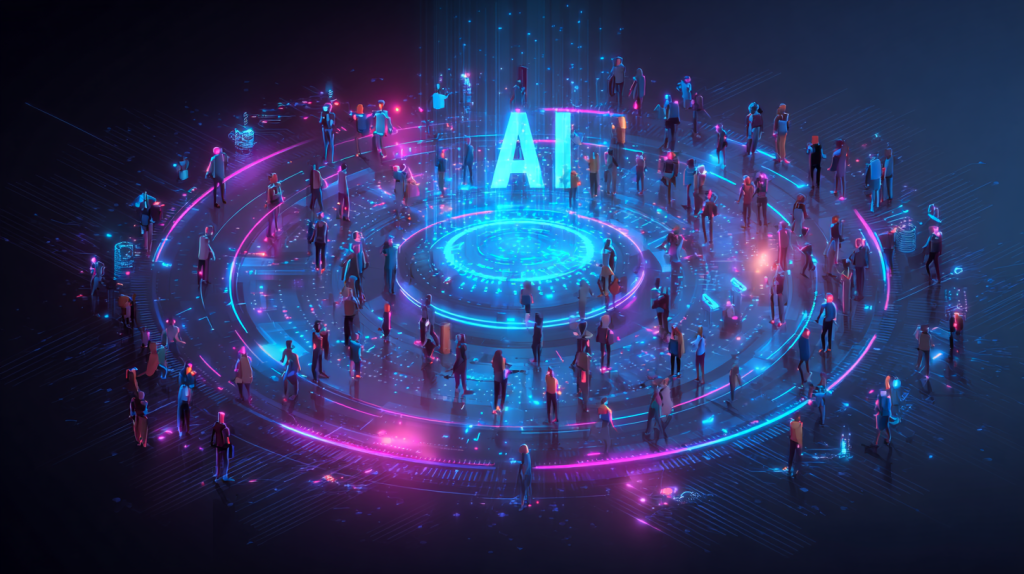For decades, marketers have relied on traditional segmentation—age, gender, income, location—to understand and target consumers. While demographic segmentation provided a starting point, it often led to broad, one-size-fits-all campaigns that failed to capture the complexity of human behavior.
Today, Artificial Intelligence (AI) is breaking these boundaries. By analyzing real-time data, behaviors, and contextual signals, AI enables businesses to move beyond demographics toward psychographic, behavioral, and predictive segmentation. The result? Hyper-personalized marketing that resonates deeply with individual customers.
In this article, we’ll explore how AI is redefining customer segmentation, why it matters, and how businesses can apply it effectively.
Why Traditional Demographics Are No Longer Enough
Demographics such as “25–34, urban, middle-income” describe groups, not individuals. In reality:
- Two people of the same age and income might have entirely different interests.
- A customer’s intent changes depending on context (e.g., weekday vs. weekend browsing).
- Static demographic profiles don’t evolve as customer behavior changes.
This limitation creates generic campaigns that may reach many, but rarely engage meaningfully.
How AI is Transforming Customer Segmentation
1. Behavioral Segmentation Powered by AI
AI can analyze clickstream data, purchase history, app usage, and browsing patterns to identify micro-segments.
- Example: Instead of targeting “millennials,” AI can identify “budget-conscious travelers who frequently book last-minute weekend trips.”
2. Psychographic Insights from AI
Using natural language processing (NLP) and sentiment analysis, AI can uncover values, interests, and motivations.
- Example: Social media comments and reviews reveal whether a customer values sustainability, luxury, or convenience.
3. Predictive Segmentation with Machine Learning
Machine learning models can predict future behaviors based on patterns.
- Example: An e-commerce platform can segment users as “likely to churn,” “likely to upgrade,” or “likely to purchase within 7 days.”
4. Real-Time Dynamic Segmentation
AI continuously updates customer segments in real time.
- Example: A streaming service may move a user from “casual viewer” to “binge-watcher” after detecting 10 hours of weekend activity.
5. Contextual & Situational Segmentation
AI leverages location data, time, and device usage to deliver the right message at the right time.
- Example: A food delivery app can target office workers with lunch deals at noon and families with dinner bundles at 7 PM.
Benefits of AI-Powered Customer Segmentation
- Hyper-personalization → Messages tailored to individual preferences.
- Higher ROI → Marketing spend optimized toward the most receptive segments.
- Improved Customer Experience → Customers feel understood, not spammed.
- Proactive Engagement → Predicting churn or upsell opportunities before they happen.
- Agility → Ability to adapt segments instantly as customer behavior evolves.
Real-World Examples
- Amazon: Uses AI to segment customers based on purchase history and browsing to deliver highly personalized recommendations.
- Spotify: Segments users by listening patterns, moods, and contexts to create unique playlists like Discover Weekly.
- Nike: Combines behavioral and psychographic AI segmentation to personalize app experiences and product launches.
How Businesses Can Implement AI-Powered Segmentation
- Collect Rich Data: Beyond demographics—include browsing, purchase, app usage, and social signals.
- Invest in AI Tools: Use platforms like Salesforce Einstein, Adobe Sensei, or custom ML models.
- Start with Micro-Segments: Focus on small, high-value clusters before scaling.
- Continuously Update Models: AI thrives on real-time data, not static datasets.
- Balance Personalization & Privacy: Be transparent about data usage to maintain trust.
Challenges and Ethical Considerations
- Data Privacy Concerns: GDPR, CCPA, and new AI regulations demand strict compliance.
- Bias in AI Models: Poor training data can lead to unfair targeting.
- Over-Personalization Risk: Customers may find hyper-targeted ads “creepy.”
Businesses must balance AI-driven precision with ethical responsibility.
Future of Customer Segmentation with AI
The future will see AI-powered segmentation evolve toward:
- Emotion-based Segmentation: Reading facial expressions, tone of voice, and biometrics.
- Cross-Channel Integration: Real-time segmentation across email, social, in-store, and AR/VR.
- Self-Learning Segments: AI models that autonomously create, test, and refine segments.
Ultimately, AI will allow marketers to view customers as dynamic individuals rather than static categories.
AI is reshaping customer segmentation beyond demographics, enabling businesses to deliver personalized, context-aware, and predictive marketing experiences. Marketers who embrace AI-powered segmentation will not only see better ROI but also build deeper, trust-based relationships with their customers.
The age of generic campaigns is ending—and the era of AI-driven personalization has just begun.



